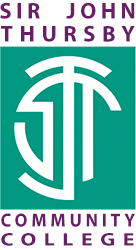Topic 8 Year 8 Mathematics
| Mathematics | |||
| Topic | Univariate data | ||
| No of lessons | 12 | ||
| When is it happening | Term 2 Year 8 | ||
| What will students learn | This unit explores a variety of methods of presenting data, with an emphasis on interpretation as well as production. Although students are not required to collect raw data, if they could collect their own data this would make the unit more meaningful. Some suggestions for how to do this as well as a large data set for students to work with for applying the statistical method taught in this unit. The unit presents a series of inquiry questions and students make hypotheses in relation to these. Each of the statistical methods taught in this unit are used to construct an argument for or against the hypotheses. Students begin by considering different ways of representing a data set such as in tables, bar charts, pictograms, line graphs and pie charts. Students organize data into different frequency distributions and look at the impact of different
groupings. Misleading graphical representations of the data are presented and critiqued. In the second part of this unit, students begin to look at statistical measures and interpret these in terms of the data. Students calculate the mean, median, mode and range of ungrouped and grouped data. Time is spent discussing the different measures of centrality and the merits of each. |
||
| Key Knowledge that students should know at the end of 'Topic' | This is the knowledge that students will meet for the first time in this topic | • Find the mean, median mode and range from raw datasets • Use the mean, median and mode to compare data sets • Use an average plus the range to compare datasets • Find the mode, median and mean from tables and graphical representations (not grouped)• Explore methods of data collection including surveys, questionnaires and the use of secondary data • Appreciate the difference between discrete and continuous data • Classify and tabulate data • Conduct statistical investigations using collected data | |
| This is knowledge that students may have met before but will need to deepen their understanding |
will apply their addition and division skills to calculate the mean average in a variety of contexts. |
||
| Key Skills that students should be able to demonstrate at the end of 'Topic' | This is the skills that students will meet for the first time in this topic | 4 operations | |
| This is skills that students may have met before but will need to develop | Using a scientific calculator | ||
| Key vocabulary that students should know and understand | Hypothesis, Investigation, enquiry, primary/secondary data, scale, discrete, continuous, range, average, qualitative, quantitative, mean, mode, median, modal, outlier | ||
| The Big Question | A set of 5 numbers is 3, 7, 8, 10, x (where x is a missing number). The mean of these 5 numbers is 6. What is the value of x? | ||
|
Key questions that students should be able to answer at the end of the 'Topic' |
What are the different types of data | ||
| What is a hypothesis? | |||
| What is a sample size? | |||
| How do you write a survey question | |||
| How do you work out an overall mean? | |||
| How do you work out mode, median mean and range | |||
| When is each average appropriate? | |||
| What is a frequency table? | |||
| How do you use a frequency table? | |||
